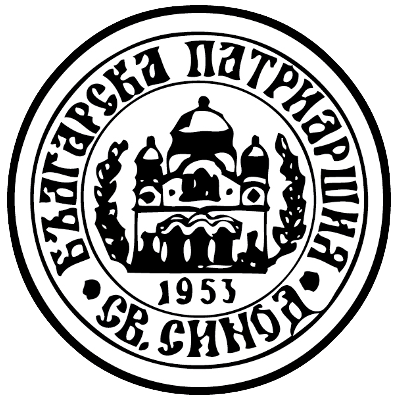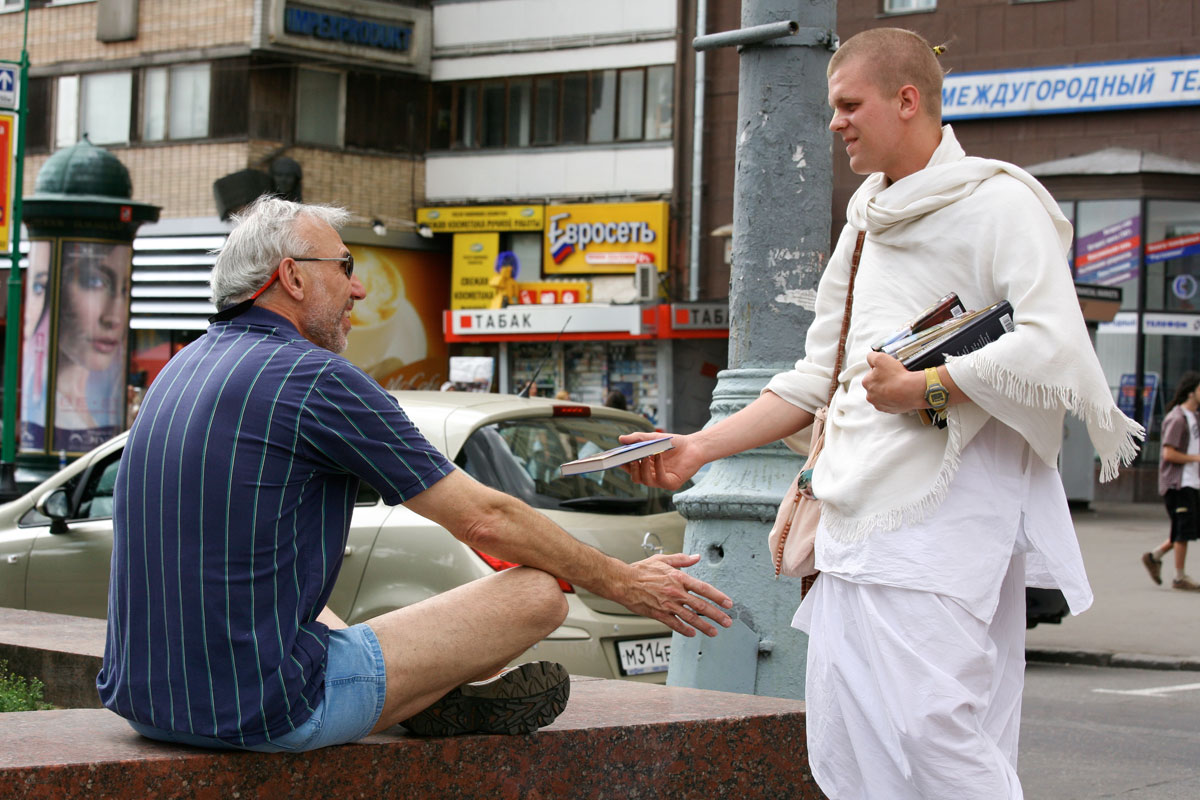|
Christianity In Bulgaria
Religion in Bulgaria has been dominated by Christianity since its adoption as the state religion in 864. The dominant form of the religion is Eastern Orthodox Christianity within the fold of the Bulgarian Orthodox Church. During the Ottoman rule of the Balkans, Islam spread to the territories of Bulgaria, and it remains a significant minority today. The Catholic Church has roots in the country since the Middle Ages, and Protestantism arrived in the 19th century; both of them remain very small minorities. Today, a significant part of the Bulgarians are not religious, or believers who do not identify with any specific religion, and Bulgaria has been the cradle of some new religions, notably the Neo-Theosophical movement of Dunovism. Since the early 21st century, there has been a decline of both the historic religions of Bulgaria—Eastern Orthodox Christianity and Islam—, which have shrunken, respectively, the former from 7.3m or 87% of the population in the 1992 censu ... [...More Info...] [...Related Items...] OR: [Wikipedia] [Google] [Baidu] |
Bulgarian Orthodox Church
The Bulgarian Orthodox Church ( bg, Българска православна църква, translit=Balgarska pravoslavna tsarkva), legally the Patriarchate of Bulgaria ( bg, Българска патриаршия, links=no, translit=Balgarska patriarshiya), is an autocephalous Orthodox jurisdiction. It is the oldest Slavic Orthodox church, with some 6 million members in Bulgaria and between 1.5 and 2 million members in a number of European countries, the Americas, Australia, New Zealand and Asia. It was recognized as autocephalous in 1945 by the Ecumenical Patriarchate of Constantinople. History Early Christianity The Bulgarian Orthodox Church has its origin in the flourishing Christian communities and churches set up in the Balkans as early as the first centuries of the Christian era. Christianity was brought to the Balkans by the apostles Paul and Andrew in the 1st century AD, when the first organised Christian communities were formed. By the beginning of the 4th ce ... [...More Info...] [...Related Items...] OR: [Wikipedia] [Google] [Baidu] |
New Religious Movements
A new religious movement (NRM), also known as alternative spirituality or a new religion, is a religious or spiritual group that has modern origins and is peripheral to its society's dominant religious culture. NRMs can be novel in origin or they can be part of a wider religion, in which case they are distinct from pre-existing denominations. Some NRMs deal with the challenges which the modernizing world poses to them by embracing individualism, while other NRMs deal with them by embracing tightly knit collective means. Scholars have estimated that NRMs number in the tens of thousands worldwide, with most of their members living in Asia and Africa. Most NRMs only have a few members, some of them have thousands of members, and a few of them have more than a million members.Eileen Barker, 1999, "New Religious Movements: their incidence and significance", ''New Religious Movements: challenge and response'', Bryan Wilson and Jamie Cresswell editors, Routledge There is no single, a ... [...More Info...] [...Related Items...] OR: [Wikipedia] [Google] [Baidu] |
Banya Bashi Mosque
Banya Bashi Mosque ( bg, Баня баши джамия, ; tr, Banya Başı Camii) is a mosque in Sofia, Bulgaria. History The mosque was designed by the famous Ottoman architect Mimar Sinan and completed in 1566, during the years the Ottomans had control of the city. The mosque derives its name from the phrase ''Banya Bashi'', which means ''many baths''. (In the Turkish language Banyo means bath and Baş pronounced Bash means 'head' or 'main', so looking at the location it is built on, a more logical translation of the name would be 'Head of the bath mosque') The most outstanding feature of the mosque is that it was actually built over natural thermal spas; one can even see the steam rising from vents in the ground near the mosque walls. The mosque is famous for its large dome, diameter 15m, and the minaret. Currently, the Banya Bashi Mosque is the only functioning mosque in Sofia, a remnant of the Ottoman rule of Bulgaria that lasted nearly five centuries, and is used by ... [...More Info...] [...Related Items...] OR: [Wikipedia] [Google] [Baidu] |
Cathedral Of St Joseph, Sofia
The Cathedral of St Joseph ( bg, катедрала „Св. Йосиф“) is a Roman Catholic cathedral in Sofia, the capital of Bulgaria. It is the co-cathedral of the Diocese of Sofia and Plovdiv, together with the Cathedral of St Louis in Plovdiv. The cathedral, rebuilt at its previous location after it was destroyed by Allied bombing raids during World War II, was inaugurated on 21 May 2006 in the presence of Cardinal Secretary of State Angelo Sodano, Dean of the College of Cardinals of the Roman Catholic Church. The foundation stone of the new cathedral was laid personally by Pope John Paul II during his visit to Bulgaria in 2002. "Saint Joseph" is the largest Catholic cathedral in Bulgaria has 350 seats and can hold up to 1,000 worshipers. The cathedral is 23 metres long, 15 metres wide is, is 19 metres high main body of the building with a roof height of 23 metres and the tower is equipped with four electronically operated bells, is 33 metres high. The cathedral is equ ... [...More Info...] [...Related Items...] OR: [Wikipedia] [Google] [Baidu] |
St Nedelya Church
Sveta Nedelya Church ( bg, Катедрален храм "Св. великомъченица Неделя" в София or църква „Света Неделя“, translit=Sveta Nedelya) is an Eastern Orthodox church in Sofia, the capital of Bulgaria, a cathedral of the Sofia bishopric of the Bulgarian Patriarchate. Sveta Nedelya is a medieval church that has suffered destruction through the ages and has been reconstructed many times. The present building of the temple is among the landmarks of Sofia. It was designed by the famous Bulgarian architectural team Ivan Vasilyov, Vasilyov-Dimitur Tsolov, Tsolov. The relics of the List of Serbian monarchs, Serbian king Stefan Milutin, Stefan Uroš II Milutin is kept in the church. History The history of the cathedral's earliest years is to a large extent unknown. It was probably built in the 10th century and had stone foundations and an otherwise wooden construction, remaining wooden until the middle of the 19th century, unlike most ... [...More Info...] [...Related Items...] OR: [Wikipedia] [Google] [Baidu] |
Sofia
Sofia ( ; bg, София, Sofiya, ) is the capital and largest city of Bulgaria. It is situated in the Sofia Valley at the foot of the Vitosha mountain in the western parts of the country. The city is built west of the Iskar river, and has many mineral springs, such as the Sofia Central Mineral Baths. It has a humid continental climate. Being in the centre of the Balkans, it is midway between the Black Sea and the Adriatic Sea, and closest to the Aegean Sea. Known as Serdica in Antiquity and Sredets in the Middle Ages, Sofia has been an area of human habitation since at least 7000 BC. The recorded history of the city begins with the attestation of the conquest of Serdica by the Roman Republic in 29 BC from the Celtic tribe Serdi. During the decline of the Roman Empire, the city was raided by Huns, Visigoths, Avars and Slavs. In 809, Serdica was incorporated into the Bulgarian Empire by Khan Krum and became known as Sredets. In 1018, the Byzantines ended Bulgarian rule ... [...More Info...] [...Related Items...] OR: [Wikipedia] [Google] [Baidu] |
Socialist Federal Republic Of Yugoslavia
The Socialist Federal Republic of Yugoslavia, commonly referred to as SFR Yugoslavia or simply as Yugoslavia, was a country in Central and Southeast Europe. It emerged in 1945, following World War II, and lasted until 1992, with the breakup of Yugoslavia occurring as a consequence of the Yugoslav Wars. Spanning an area of in the Balkans, Yugoslavia was bordered by the Adriatic Sea and Italy to the west, by Austria and Hungary to the north, by Bulgaria and Romania to the east, and by Albania and Greece to the south. It was a one-party socialist state and federation governed by the League of Communists of Yugoslavia, and had six constituent republics: Bosnia and Herzegovina, Croatia, Macedonia, Montenegro, Serbia, and Slovenia. Within Serbia was the Yugoslav capital city of Belgrade as well as two autonomous Yugoslav provinces: Kosovo and Vojvodina. The SFR Yugoslavia traces its origins to 26 November 1942, when the Anti-Fascist Council for the National Liberation of Yugoslavia wa ... [...More Info...] [...Related Items...] OR: [Wikipedia] [Google] [Baidu] |
National Assembly (Bulgaria)
The National Assembly ( bg, Народно събрание, Narodno sabranie) is the unicameral parliament and legislative body of the Republic of Bulgaria. The National Assembly was established in 1879 with the Tarnovo Constitution. Ordinary National Assembly The National Assembly consists of 240 members elected for a four-year term, elected by proportional representation in multi-seat constituencies. Political parties must garner a minimum of 4% of the national vote in order to enter the Assembly. Bulgaria has a multi-party system. The Assembly is responsible for enactment of laws, approval of the budget, scheduling of presidential elections, selection and dismissal of the Prime Minister and other ministers, declaration of war, concluding peace and deployment of troops outside Bulgaria, and ratification of international treaties and agreements. It is headed and presided by the Chairperson of the National Assembly of Bulgaria. The Assembly administers the publication of ... [...More Info...] [...Related Items...] OR: [Wikipedia] [Google] [Baidu] |
Constitution Of Bulgaria
The Constitution of the Republic of Bulgaria ( bg, Конституция на Република България, ''Konstitutsia na Republika Bǎlgariya'') is the supreme and basic law of the Republic of Bulgaria. The current constitution was adopted on 12 July 1991 by the 7th Grand National Assembly of Bulgaria, and defines the country as a unitary parliamentary republic. It has been amended five times (in 2003, 2005, 2006, 2007, and 2015). Chronologically, it is the fourth constitution of Bulgaria, the first being the Tarnovo Constitution of 1879. It was immediately preceded by the two Socialist-era constitutions–the Dimitrov Constitution (named after Georgi Dimitrov), in force between 1947 and 1971, and the Zhivkov Constitution (named after Todor Zhivkov), in force between 1971 and 1991. Content Political System Distribution of powers The constitution sets about a parliamentary form of government, in which executive power is rested upon the Government of Bulgaria, ... [...More Info...] [...Related Items...] OR: [Wikipedia] [Google] [Baidu] |
Parliamentary Republic
A parliamentary republic is a republic that operates under a parliamentary system of government where the executive branch (the government) derives its legitimacy from and is accountable to the legislature (the parliament). There are a number of variations of parliamentary republics. Most have a clear differentiation between the head of government and the head of state, with the head of government holding real power, much like constitutional monarchies (however in some countries the head of state, regardless of whether the country's system is a parliamentary republic or a constitutional monarchy, has 'reserve powers' given to use at their discretion in order to act as a non-partisan 'referee' of the political process and ensure the nation's constitution is upheld). Some have combined the roles of head of state and head of government, much like presidential systems, but with a dependency upon parliamentary power. For the first case mentioned above, the form of executive-branch a ... [...More Info...] [...Related Items...] OR: [Wikipedia] [Google] [Baidu] |
People's Republic Of Bulgaria
The People's Republic of Bulgaria (PRB; bg, Народна Република България (НРБ), ''Narodna Republika Balgariya, NRB'') was the official name of Bulgaria, when it was a socialist republic from 1946 to 1990, ruled by the Bulgarian Communist Party (BCP) together with its coalition partner, the Bulgarian Agrarian People's Union. Bulgaria was closely allied with the Soviet Union during the Cold War, being part of Comecon as well as a member of the Warsaw Pact. The Bulgarian resistance movement during World War II deposed the Kingdom of Bulgaria administration in the Bulgarian coup d'état of 1944 which ended the country's alliance with the Axis powers and led to the People's Republic in 1946. The BCP modelled its policies after those of the Soviet Union, transforming the country over the course of a decade from an agrarian peasant society into an industrialized socialist society. In the mid-1950s and after the death of Stalin, the party's hardliners lost in ... [...More Info...] [...Related Items...] OR: [Wikipedia] [Google] [Baidu] |
One-party State
A one-party state, single-party state, one-party system, or single-party system is a type of sovereign state in which only one political party has the right to form the government, usually based on the existing constitution. All other parties are either outlawed or allowed to take only a limited and controlled participation in elections. Sometimes the term "''de facto'' one-party state" is used to describe a dominant-party system that, unlike the one-party state, allows (at least nominally) democratic multiparty elections, but the existing practices or balance of political power effectively prevent the opposition from winning power. Although it is predated by the 1714 to 1783 "age of the Whig oligarchy" in Great Britain, the rule of the Committee of Union and Progress (CUP) over the Ottoman Empire following the 1913 coup d'etat is often considered the first one-party state. Concept One-party states justify themselves through various methods. Most often, proponents of a one- ... [...More Info...] [...Related Items...] OR: [Wikipedia] [Google] [Baidu] |



.jpg)


